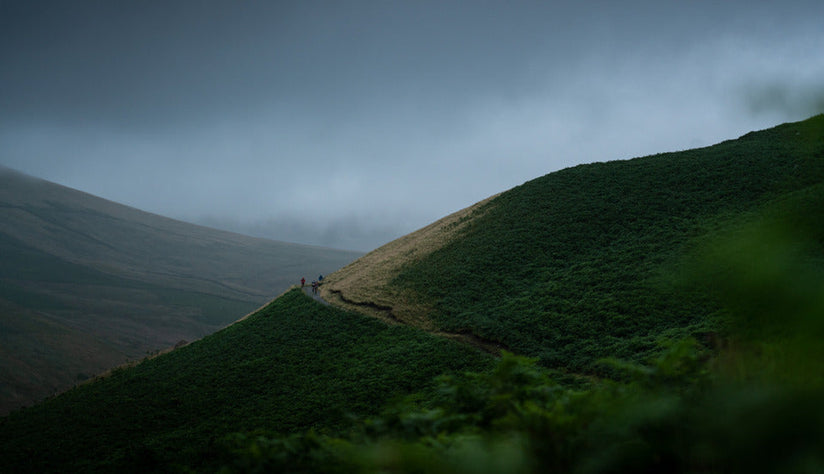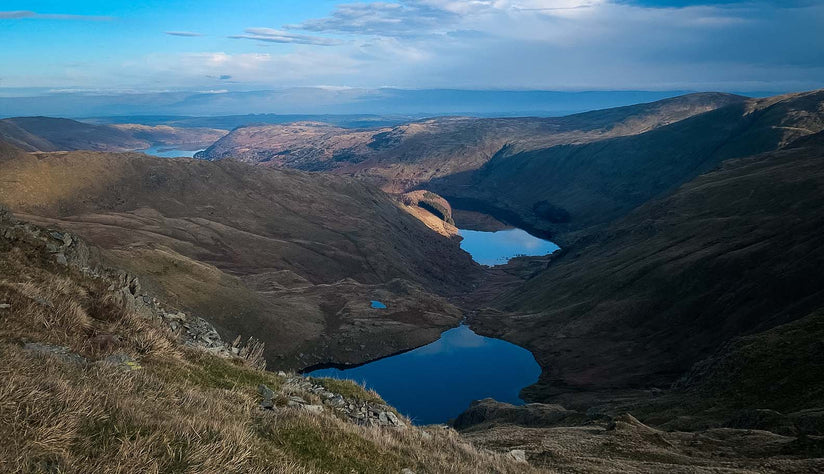Alex Metcalf | MACCF supported expedition
From its origins back in the “Golden Age” of mountaineering to its roll call of legendary members and their incredible achievements, the Alpine Club has long been at the leading edge of development and exploration in the mountains.
Today over 1,500 members are now part of the Club, and they continue to be recognised for their achievements in climbing. In fact, of the 56 routes awarded a Piolet d’Or (An award celebrating the year's greatest ascents across the world), 15 have been awarded to Alpine Club members and 11 of these have been British climbers.
Each member ultimately has a deep love for exploring mountains. They care about helping to preserve the legacy of the pioneering early explorers and are passionate about protecting these fragile natural spaces to keep them accessible for others to explore in the future.
To find out more about this time-honoured group of mountain enthusiasts, Vice President of the Alpine Club, Adele Long, shares where it all began, how the club has evolved over the years and more on how you can get involved today, including information about the Montane Alpine Club Climbing Fund…
“Anyone who loves mountaineering and the community around it, and has the prerequisite qualifications, would enjoy being a member of the Alpine Club. It's a way to meet others who share your passion, plan trips and ascents and learn from years of mountaineering and exploring experience.” Adele Long, Vice President of The Alpine Club

Lucy Walker, her husband and their guides © Alpine Club Collection
An Overview of the Alpine Club
Whilst the Alpine Club still retains a deep respect for its mountaineering heritage, much like the world, the Club has evolved and adapted since its exclusive early days in the 1800s (more on that in a minute!). At its core, the Alpine Club provides each member an inclusive and supportive environment to progress their climbing passion and skills to the next level.
In order to enable this, the Club has multiple strands and foci, facilitating expeditions, alpine climbing and several large scale meet ups to deliver knowledge sharing and skills development on key topics. In addition to this they also work with other like-minded organisations such as ourselves here at Montane and the British Mountaineering Council, ensuring The Alpine Club can support more aspiring mountaineers who are eager to develop their climbing skills.
One major change to the Club's DNA was the merging of the Alpine Club and the Ladies Alpine Club in 1975. For over 70 years, the Ladies Alpine Club operated independently and, in this time, had several famous members, including Lucy Walker, the first woman to ascend the Matterhorn back in 1871. Women now participate at all levels within the Club and their mountaineering achievements are recognised and equally celebrated.
In 2021, the club hosted the Women Rise Up event which brought together women from 6 countries to climb together and to celebrate the 150th anniversary of first ascents by Lucy Walker. In January 2023 the Alpine Club also delivered an Expedition Essentials For Women Explorers meet up at Plas y Brenin, which aimed to provide more women with the knowledge they need to take on a challenge of this kind.

#TeamMontane mountaineer & Alpine Club member Becky Coles
Another area that has become more of a focus for the Club in recent years is the increasing impact of climate change. Glacial recession and increased risk of rock fall have changed the landscape and subsequently the Alpine Club’s attitude to mountaineering. Climate change has resulted in routes disappearing completely and reduced windows for safe climbing on some mountains. In recognition of this, former President Doug Scott embedded protection of the environment in the Club rules.
“Since the Club's inception, it has been involved in setting standards in the mountains. From the early thoughts on technique, all the way up to today with the Club's current position on travel and climate change.” Adele Long
The Alpine Club’s Origins
Fuelled by increasing accessibility to Alpine regions, the Golden Era of Mountaineering in the mid-1800s involved a surge of first ascents of European mountains. This includes Monta Rosa and the Matterhorn. Set against this exciting backdrop of pioneering exploration in the mountains, in February of 1857, the young mountaineer William Mathews (who made the first ascent of Monte Viso in Italy) suggested the establishment of an Alpine Club.
The aim of the club was to provide an opportunity for members to dine together once a year and share information about the Alps and what they had climbed. On 22nd December 1857, 11 of the 12 who had been invited to become founding members met at Ashley’s Hotel in Covent Garden.
By January of the following year, 16 more names had been added, making a total of 28. Between 1857 and 1863, 281 members had been elected, including members of the legal professions, medics, the clergy, academics, civil servants, military officers, stockbrokers, landed gentry, glaciologists and others.

Edward Whymper | Early Alpine Club members in Zermatt
Significantly, at this time, the Alpine Club was strictly a gentlemen's club made up of the landed gentry with experience exploring high mountainous ranges. Both women and the working classes didn’t join the Alpine Club until much later (keep reading for more on that!).
Once a member, those involved would meet to discuss their experiences in the mountains and provide detailed maps and accounts of their Alpine experiences. This was intended as a collaborative knowledge-sharing opportunity. They also produced an annual record of their ‘mountain activity and scientific observations’ in the Alpine Journal.
“The majority of the 4000m Alpine summits hadn’t been climbed before this time. During the 11 years from 1854 to 1865 there was a flurry of first ascents. Many of these climbs (31 of 39 to be precise) were completed by Alpine Club members.” - Adele Long

Alex Metcalfe | Looking across the Zaroshkul Glacier to Pk5783 on a MACCF supported expedition
Evolution over the years
In 1921, the Joint Himalayan Committee was formed by the Alpine Club and Royal Geographic Society to finance and organise the Everest Expeditions of the 1920s, 30s and 50s. This committee, which included Professor Norman Collie, Captain John Farrar and CF Meade became the Mount Everest Foundation (MEF) after the 1953 ascent of Everest by Alpine Club members Edmund Hilary and Tenzing Norgay. It remains an organisation that funds expeditions of a scientific or mountaineering nature and advocates responsible expedition practices.
The 1930s saw the emergence of more working-class climbers. Their appearance on the climbing scene was aided by the Youth Hostel movement and post-First World War unemployment. Although not an Alpine Club member, Alistair Borthwick was the first person to document the activities of ‘the impecunious climber’. He has been quoted as saying “fresh air was still the property of moneyed men, a luxury open to few … hiking was the hobby of an enthusiastic handful, and climbing was a rich man’s sport.”
In the 1940s, the then-President of the Alpine Club, Geoffrey Winthrop Young, made lots of first ascents and advocated for more diversity. He significantly went on to form the BMC (British Mountaineering Council), representing 20 climbing clubs. The creation of the BMC signified a shift in the representation of British climbing. 17 of the first 22 BMC presidents were Alpine Club members and the Alpine Club still remains affiliated to the BMC today.

A long-lasting legacy
In addition to all the countless first ascents of mountains worldwide by Alpine Club members, the Alpine Club owns an impressive collection of items accumulated over the years as part of these pioneering expeditions. This fascinating array of information and mountaineering treasures is stored in their London-based clubhouse and can be found regularly exhibited both in the UK and overseas.
In 1982, the Treasures of the Alpine Club exhibition was held to celebrate 125 years of the Club and showcase the possessions it had collected through gifts and legacy. In 2021, there was also a successful exhibition called Everest, by those who were there, which showcased writings and artifacts from the 1921, 1922 and 1924 expeditions.
“The Alpine Club isn’t only about going out mountaineering - it has the largest single collection of mountaineering literature in the world and includes a comprehensive library of maps. It also has countless mountain artwork and artefacts. These are exhibited regularly, both in the clubhouse in London and in exhibitions throughout the world.”

Early alpine tourists on the Mer de Glace, Chamonix © Alpine Club Collection
The Montane Alpine Club Climbing Fund (MACCF)
Sharing a passion for exploring mountains, the Alpine Club and Montane seemed a natural fit. So, in 2016, Montane officially joined forces with the Alpine Club and set up the Montane Alpine Club Climbing Fund, enabling grants for those eager to explore some of the world’s most remote mountainous regions.
Each year, the fund makes £10,000 available to support Alpine Club members who wish to take on such challenges! These often involve attempting first ascents and/or new routes in remote areas or exploring little-known mountainous areas.

















